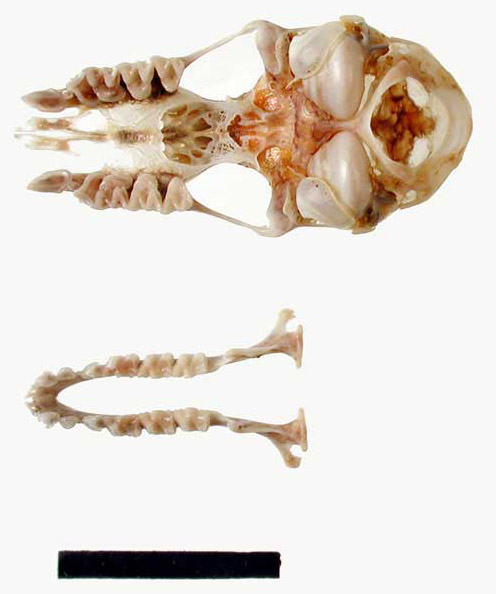 Eastern horseshoe bat skull
Eastern horseshoe bat skull
TLF ID R7921
This is a colour photograph of the internal skull of an eastern horseshoe bat ('Rhinolophus megaphyllus'). This museum specimen displays two components of the skull: the braincase with fused rostrum and the lower jaw. This image has a pale background and includes a thick black scale line representing 1 cm. (Classification - Phylum: Chordata, Class: Mammalia, Order: Chiroptera, Family: Rhinolophidae)
